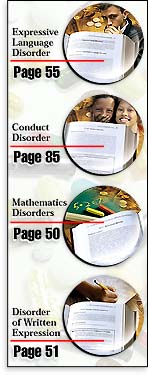A Manufactured Epidemic

hildren are being diagnosed with mental illnesses and prescribed drugs based on disorders voted into existence by psychiatrists and recorded in the psychiatric industry’s diagnostic and billing bible, the Diagnostic and Statistical Manual (DSM). As many as eight million American children are now taking psychiatric drugs — representing hundreds of millions of dollars in profits.
Multiple diagnoses, and prescription of multiple drugs, are not unusual. An examiner for the American Board of Psychiatry told Freedom that “kids are commonly on as many as five to six medications at a time.”
Many educators and child authorities maintain that DSM disorders are matters of learning and behavior routinely corrected with better education, parenting and physiological medicine, including improved nutrition.
ATTENTION-DEFICIT HYPERACTIVITY DISORDER (ADHD) and the related ATTENTION DEFICIT DISORDER (ADD) are the most prevalent “disorders”. Diagnoses of ADHD are based on a combination of as few as three of a list of open-ended “symptoms” including inability to concentrate, fidgeting in one’s seat, speaking out of turn in class, having “sloppy” work and being easily distracted. ADHD and ADD diagnoses have generated millions of prescriptions for Ritalin since the late 1980s, and a 700 percent increase in production of the drug since 1990. Widespread use of the addictive amphetamine-like substance and its subsequent proliferation as an illegal street drug have fueled national concerns that the labeling and “legal drugging” of children is a manufactured, profit-driven epidemic. Escalating violence, suicide and homicide by youth-prescribed drugs have caused those concerns to skyrocket.
Other “learning disorders” and “conduct disorders” for which children and adolescents are prescribed psychiatric drugs cover a gamut of educational failures which plague schools and allow youth to be chemically restrained. A few examples are provided here.





